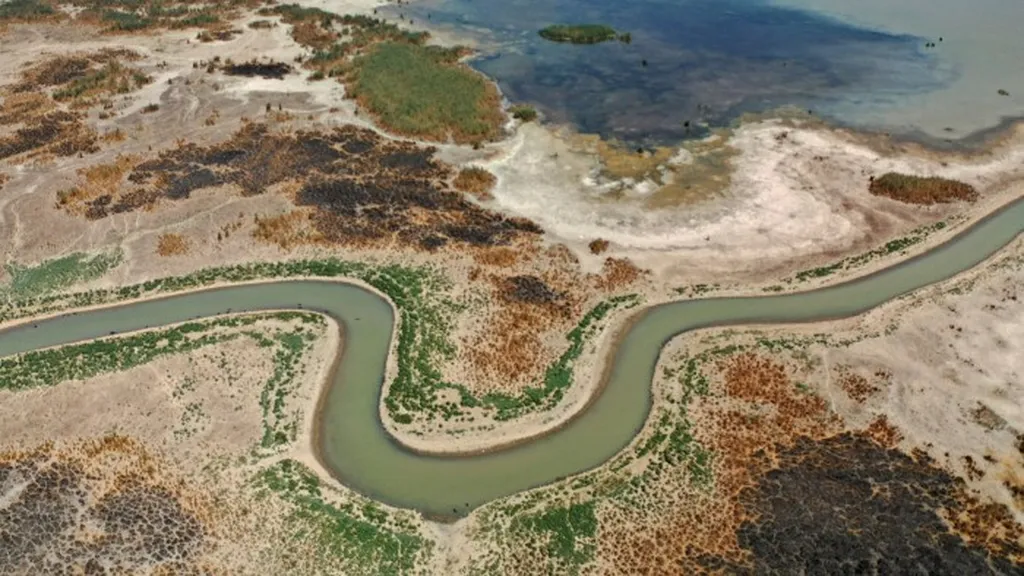In the heart of the Middle East, Iran is grappling with a silent crisis that threatens its water and food security. With over 88 million people and 14.2 million hectares of cultivated land, the country is facing severe water stress, with agriculture consuming over 87% of its national water resources. A recent study published in the *Journal of Hydrology: Regional Studies* (translated from Persian as “Regional Hydrology Studies”) sheds light on the dire situation, offering projections that could reshape the country’s approach to water management and have significant implications for the energy sector.
Led by Nooshdokht Bayat-Afshary from the Department of Civil Engineering at Sharif University of Technology in Tehran, the study employs machine learning and statistical analysis to simulate the impacts of climate change and land use on Iran’s total water storage. The findings are stark: by 2100, climate change is projected to increase nationwide actual evapotranspiration (ETa) by up to 7.7%, with agricultural ETa soaring by 23.8%. Even a 10% reduction in cultivated area cannot offset these impacts.
“Our projections indicate that under high emissions scenarios, nationwide ETa will increase by 37.1 billion cubic meters (21%) and agricultural ETa by 17.5 billion cubic meters (39%) compared to the 2009–2014 baseline,” Bayat-Afshary explains. This translates to a significant strain on the country’s water resources, with aquifer deficits projected to increase by 300 to 578 billion cubic meters over the next two decades, depending on climate scenarios.
The implications for the energy sector are profound. Agriculture’s high water consumption directly impacts energy production, particularly in regions where hydropower is a significant energy source. As water scarcity intensifies, the energy sector may face increased competition for limited water resources, potentially leading to higher operational costs and reduced energy output.
Moreover, the study highlights the urgent need for improved irrigation efficiency and demand management in agriculture. Failure to address these issues could seriously threaten Iran’s water and food security, with ripple effects across the economy. “Given current consumption trends and high withdrawal ratios, the situation is critical,” Bayat-Afshary warns. “Immediate action is required to mitigate the impacts of climate change and ensure sustainable water management.”
This research not only underscores the pressing need for innovative water management strategies but also opens avenues for further exploration in the field. The use of machine learning and ensemble modeling offers a robust framework for projecting future water scenarios, which could be applied to other water-stressed regions globally. As the world grapples with the realities of climate change, studies like this provide invaluable insights into the interconnectedness of water, agriculture, and energy, paving the way for more sustainable and resilient futures.
In the face of these challenges, the energy sector must adapt and innovate, exploring new technologies and strategies to optimize water use and ensure energy security. The findings of this study serve as a clarion call for collaborative efforts across sectors to address the multifaceted impacts of water scarcity and climate change. As Bayat-Afshary aptly puts it, “The time to act is now. The future of our water and energy resources depends on the choices we make today.”

